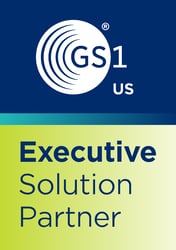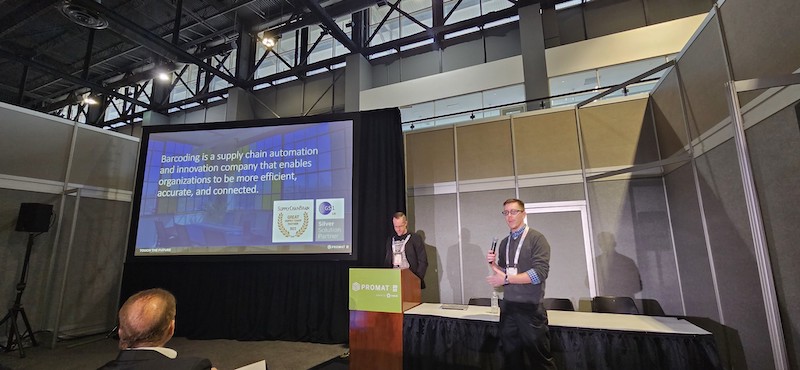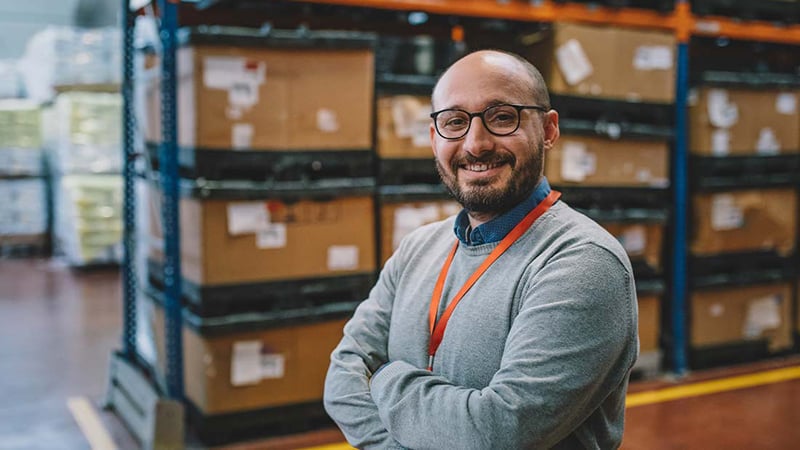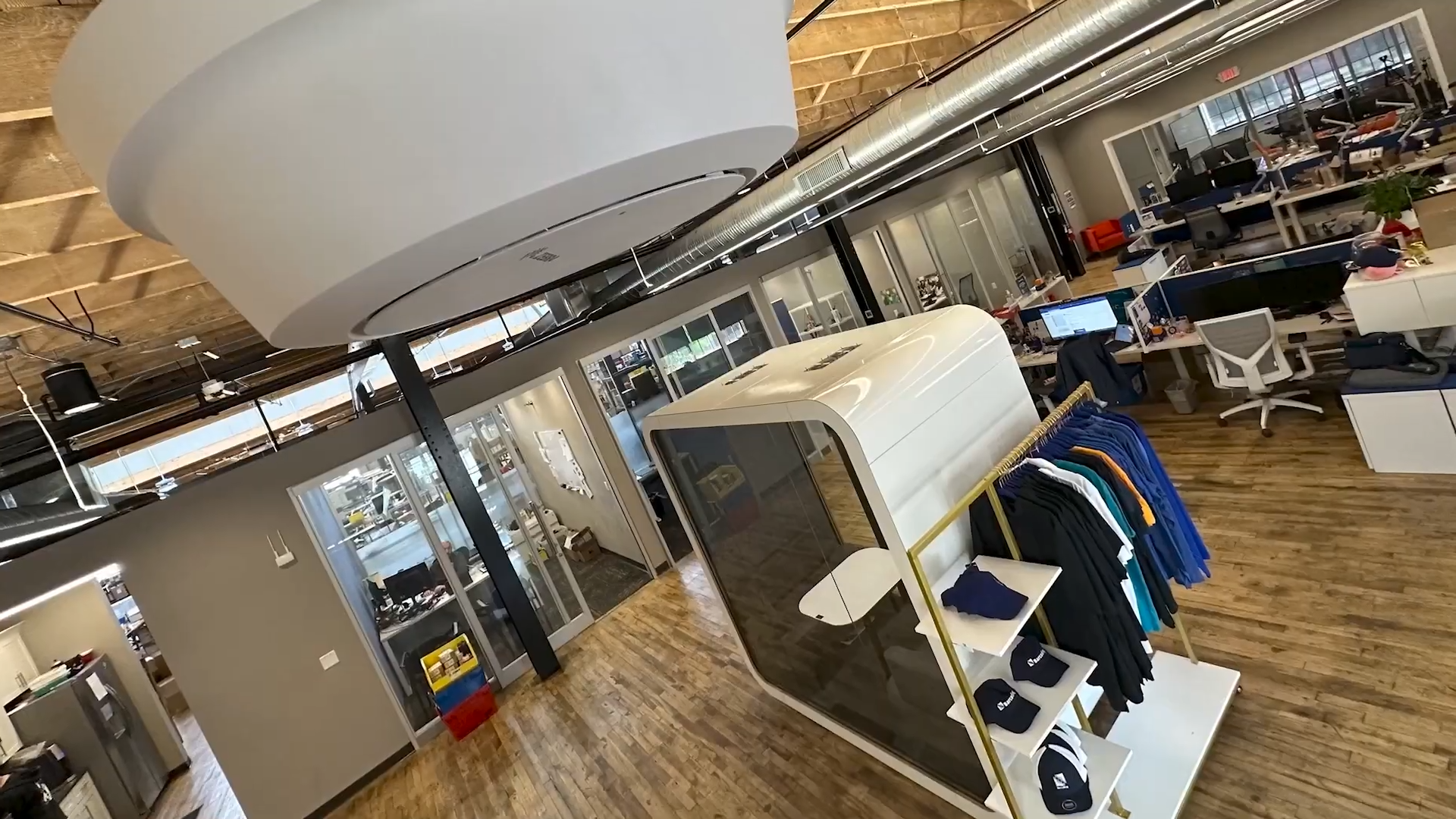If you didn’t attend Promat 2023, you missed out on three days of future-focused learning and exploration for supply chain geeks like us. (It’s true: We really do live and breathe this stuff.)
In fact, on the first day of the show, two of our own Barcoding experts hosted a seminar on best practices for achieving maximum visibility into reusable transport items (RTIs).
JW Franz, Director of IoT, and Dan Blank, Director of Label and Printing Solutions, teamed up to connect the dots between GS1 Standards for item identification and serialization, Internet of Things-connected technologies like RAIN RFID (radio frequency identification), and how they come together to help ensure the actual return and reuse of returnable, reusable transport containers.
So if you missed the seminar, do yourself a favor and read on for the recap!
Back to the Future with Returnable Transport Items
It wasn’t all that long ago in human history that reusable packaging and transport containers were the only things available. Then along came paper and plastic.
And now, businesses everywhere are looking for ways to reduce their reliance on disposable transport packaging. While single-use transport containers are quick and cheap to produce, their production is carbon-intensive and creates pollution, they introduce a recurring expense, and even recyclable plastics often end up in landfills.
Manufacturers and distributors choose returnable and reusable transport containers—like boxes, totes, dollies, drums, and pallets—to control costs, improve sustainability, and better protect products in shipment.
In a 2020 RPA survey, more than 75% of reusables manufacturers and poolers reported increased demand for their products, and 85% expected demand to further increase over the next year. Factors driving these increases include:
- Government regulation (carbon and greenhouse gas emissions, landfill waste limits, etc.)
- Consumer and public demand
- Labor availability
- Increasing automation
- Raw material sourcing
- Economic factors
- Transportation needs
81% of RPA survey respondents said automation will increase demand for reusables.
Returnable transport items do their best work when they’re handled correctly and returned as expected. And that requires a plan for managing returnables that can help prevent theft, loss, shortages, and inappropriate uses that damage RTIs. Annual costs of lost, stolen and diverted reusables vary by type and industry:
- Plastic pallets – $800 million to $1.5 billion
- Beer kegs – $52 million
- Milk crates – $80 to $100 million
Indirect costs of lost items include production disruptions, delayed deliveries, overstocking, and emergency purchases of single-use materials.
Interoperability is Key to Maximizing Returns
If you’ve ever traveled internationally with electrical appliances, you understand the pain that comes when standards aren’t shared.
That’s where GS1 Standards come in to provide agreed-up languages for item-level tracking and serialization. Standards enable interoperability, and that’s what enables visibility into RTI statuses across your supply chain, when your partners also use GS1 Standards such as:
- GTIN – Global Trade Item Number
- GLN – Global Location Number
- SSCC – Serial Shipping Container Code
- GRAI – Global Returnable Asset Identifier
 Working with a tech integration partner to establish your globally recognized GS1 company prefix opens a door to a world of standards and visibility that can transform your use of data and give you virtually real-time visibility into RTIs and a lot more.
Working with a tech integration partner to establish your globally recognized GS1 company prefix opens a door to a world of standards and visibility that can transform your use of data and give you virtually real-time visibility into RTIs and a lot more.
To apply that level of accuracy and visibility to your reusables fleets, incorporate standardized identifiers into RTI tags or labels. This makes it possible to capture, store, and share data with trading partners.
RAIN RFID & IoT-connected Equipment Help Returnables Find Their Way Back
RAIN RFID adoption is on the rise for many of the same reasons as the increase in returnables. While you can use barcode labels and scanners to track and capture data on RTIs, choosing RAIN RFID tags and labels can open more doors…literally. Using IoT-connected sensors, you can add automation that can reduce labor needs while keeping close tabs on reusables. You can also keep close tabs on storage conditions, to back up quality and/or freshness guarantees.
But let’s go back to that up-to-the-minute data. If you know where your transport containers are, who has them, and whether they’re in use or empty, the value is more than peace of mind. It’s accurate scheduling for production, warehousing, and shipments. It’s accurate ordering of non-reusable supplies. It’s right-sizing your container stock. (In other words, it’s real money.)
And when you connect item-level information with reusable containers using serialization, your data’s value compounds. You can have real-time, item-level visibility into the status and whereabouts of every product, not just their containers. Protect brand authenticity, prevent shrinkage, track and trace products for regulatory compliance, reduce overstock, and improve planning and utilization.
Choosing the Right Label Solutions for Your Reusable Containers
It’s important to choose labels and tags that can stand up to the same conditions your RTIs experience. Tags for reusables need to be durable for long-term use, and high-quality to protect RFID components and facilitate smooth operations in automated environments.
Working with an expert to choose materials and design your tags and labels eliminates errors and sets you up for future expansion of automation, and seamless data sharing with trading partners—not to mention future regulatory compliance, depending on your industry.
JW and Dan covered all this and a lot more at Promat, but we’ve also got plenty more resources to help you envision the ways you can connect items and containers to the internet using RAIN RFID. Discover how many ways RAIN RFID implementation can increase profitability in a distribution center—click here or below to download the free infographic.



 Working with a tech integration partner to establish your globally recognized GS1 company prefix opens a door to a world of standards and visibility that can transform your use of data and give you virtually real-time visibility into RTIs and a lot more.
Working with a tech integration partner to establish your globally recognized GS1 company prefix opens a door to a world of standards and visibility that can transform your use of data and give you virtually real-time visibility into RTIs and a lot more.



